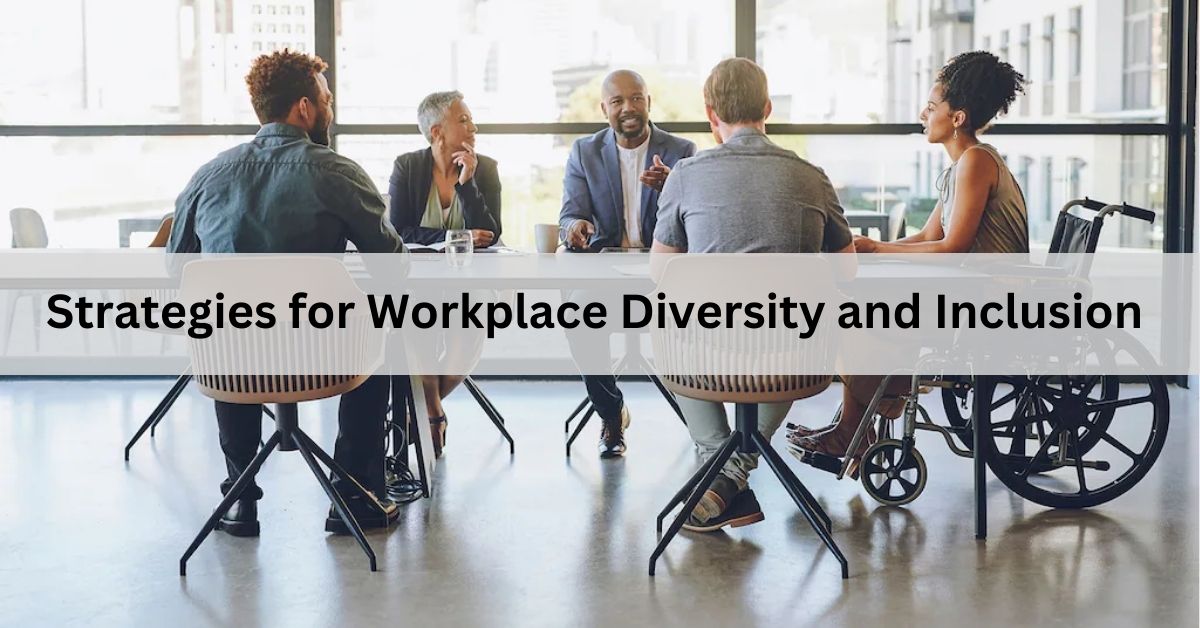In today’s global marketplace, workplace diversity and inclusion (D&I) are integral to fostering innovation, enhancing employee satisfaction, and driving organizational success. This comprehensive guide explores effective strategies and best practices for creating a diverse and inclusive workplace environment. From implementing robust diversity hiring practices to fostering an inclusive company culture and measuring diversity metrics, discover how organizations can leverage diversity as a catalyst for growth and competitive advantage.
Contents
- 0.1 Diversity Hiring Practices: Building a Diverse Talent Pipeline
- 0.2 Training and Development Programs: Empowering Through Education and Awareness
- 0.3 Creating an Inclusive Company Culture: Nurturing Belonging and Collaboration
- 0.4 Employee Resource Groups (ERGs): Empowering Communities and Driving Change
- 0.5 Addressing Unconscious Bias: Promoting Fairness and Objectivity
- 0.6 Measuring Diversity Metrics: Tracking Progress and Driving Accountability
- 0.7 Leadership Commitment to Inclusion: Setting the Tone From the Top
- 0.8 Case Studies of Successful D&I Initiatives: Learning From Industry Leaders
- 1 Conclusion:
Diversity Hiring Practices: Building a Diverse Talent Pipeline
Effective diversity hiring practices are essential for attracting and retaining a diverse workforce. Organizations can enhance their talent acquisition strategies by proactively sourcing candidates from diverse backgrounds through targeted recruitment initiatives. Partnering with diversity-focused job boards, attending diversity career fairs, and leveraging employee referrals from underrepresented groups can broaden the applicant pool. Implementing blind recruitment techniques, where demographic information is anonymized during the initial screening process, ensures fair evaluation based solely on qualifications and skills. By prioritizing diversity in recruitment efforts, organizations enrich their talent pool with varied perspectives and experiences, fostering a more innovative and inclusive workplace culture.
Training and Development Programs: Empowering Through Education and Awareness
Training and development programs play a crucial role in promoting diversity awareness and fostering inclusive behaviors among employees. Conducting regular diversity training sessions equips staff with the knowledge and skills to recognize unconscious bias, understand cultural differences, and communicate effectively across diverse teams. Interactive workshops, e-learning modules, and role-playing exercises encourage open dialogue and sensitivity towards diversity issues. Leadership training on diversity management empowers managers to champion D&I initiatives, lead by example, and create a supportive environment where all employees feel valued and respected. By investing in ongoing education and development, organizations nurture a culture of inclusivity and empower employees to contribute their best work.
Creating an Inclusive Company Culture: Nurturing Belonging and Collaboration
Building an inclusive company culture requires intentional efforts to create a sense of belonging for all employees. Organizations can foster inclusivity by celebrating cultural diversity, religious observances, and LGBTQ+ pride events. Establishing inclusive policies and practices, such as flexible work arrangements and accommodations for employees with disabilities, demonstrates commitment to supporting diverse needs and fostering a supportive work environment. Regular feedback mechanisms, employee surveys, and focus groups solicit input from employees to gauge inclusivity levels, identify barriers, and implement targeted initiatives for improvement. By fostering a culture where diversity is celebrated and every voice is heard, organizations cultivate an environment where employees thrive and contribute to collective success.
Employee Resource Groups (ERGs): Empowering Communities and Driving Change
Employee Resource Groups (ERGs) play a vital role in promoting diversity, fostering community, and driving organizational change. ERGs provide platforms for employees from diverse backgrounds to connect, share experiences, and advocate for inclusivity within the workplace. Groups focused on women, minorities, veterans, LGBTQ+ individuals, and other affinity groups offer networking opportunities, mentorship programs, and professional development initiatives. ERGs collaborate with leadership to influence policies, implement D&I initiatives, and raise awareness through cultural celebrations and educational events. By amplifying diverse voices and perspectives, ERGs contribute to a more inclusive workplace culture where all employees feel empowered to thrive and excel.
Addressing Unconscious Bias: Promoting Fairness and Objectivity
Unconscious bias can impact decision-making processes, perpetuate stereotypes, and hinder diversity efforts within organizations. Addressing unconscious bias involves raising awareness through training and workshops, implementing bias mitigation strategies in recruitment and performance evaluations, and fostering a culture of transparency and accountability. Encouraging self-awareness and empathy empowers employees to recognize and challenge their biases, promoting fair treatment and equal opportunities for all. By integrating bias awareness into organizational policies and practices, organizations create a more equitable workplace environment where meritocracy and diversity flourish.
Measuring Diversity Metrics: Tracking Progress and Driving Accountability
Measuring diversity metrics enables organizations to assess the effectiveness of their D&I initiatives, track progress towards diversity goals, and drive accountability at all levels. Key metrics include workforce demographics, representation in leadership roles, employee retention rates, and satisfaction surveys related to inclusivity. Regularly analyzing diversity data identifies areas needing improvement and informs strategic decision-making to enhance diversity outcomes. Transparently sharing diversity metrics with stakeholders demonstrates organizational commitment to accountability, encourages continuous improvement, and strengthens trust among employees, customers, and the broader community.
Leadership Commitment to Inclusion: Setting the Tone From the Top
Leadership commitment is fundamental in driving meaningful change and fostering an inclusive organizational culture. Senior executives and managers play a pivotal role in championing D&I efforts, setting clear goals, allocating resources, and holding themselves accountable for fostering an inclusive workplace environment. Leading by example through inclusive leadership behaviors, promoting diversity in decision-making processes, and publicly endorsing D&I initiatives sends a powerful message of organizational values and priorities. When leadership prioritizes inclusion, it empowers employees at all levels to embrace diversity, innovate collaboratively, and contribute to organizational success.
Case Studies of Successful D&I Initiatives: Learning From Industry Leaders
Examining case studies of successful D&I initiatives provides practical insights and inspiration for organizations committed to enhancing diversity efforts. Examples include companies that have implemented innovative diversity strategies, achieved measurable improvements in diversity outcomes, and strengthened organizational culture through inclusive practices. Case studies highlight best practices, lessons learned, and strategies for overcoming challenges in diversity management. By learning from industry leaders and adapting proven practices, organizations can tailor their D&I initiatives to drive positive change and achieve sustainable diversity outcomes.
Conclusion:
Workplace diversity and inclusion are essential pillars of organizational excellence, driving innovation, enhancing employee engagement, and fostering a culture of equity and respect. By implementing proactive diversity hiring practices, investing in comprehensive training programs, nurturing an inclusive company culture, and addressing unconscious bias, organizations can create environments where every individual feels valued and empowered to contribute their unique perspectives and talents. Leadership commitment, accountability through diversity metrics, and learning from successful case studies are essential for sustaining momentum and achieving lasting impact. Embrace diversity and inclusion as core principles of organizational success, fostering a brighter future where diversity is celebrated, and all employees thrive.



























+ There are no comments
Add yours